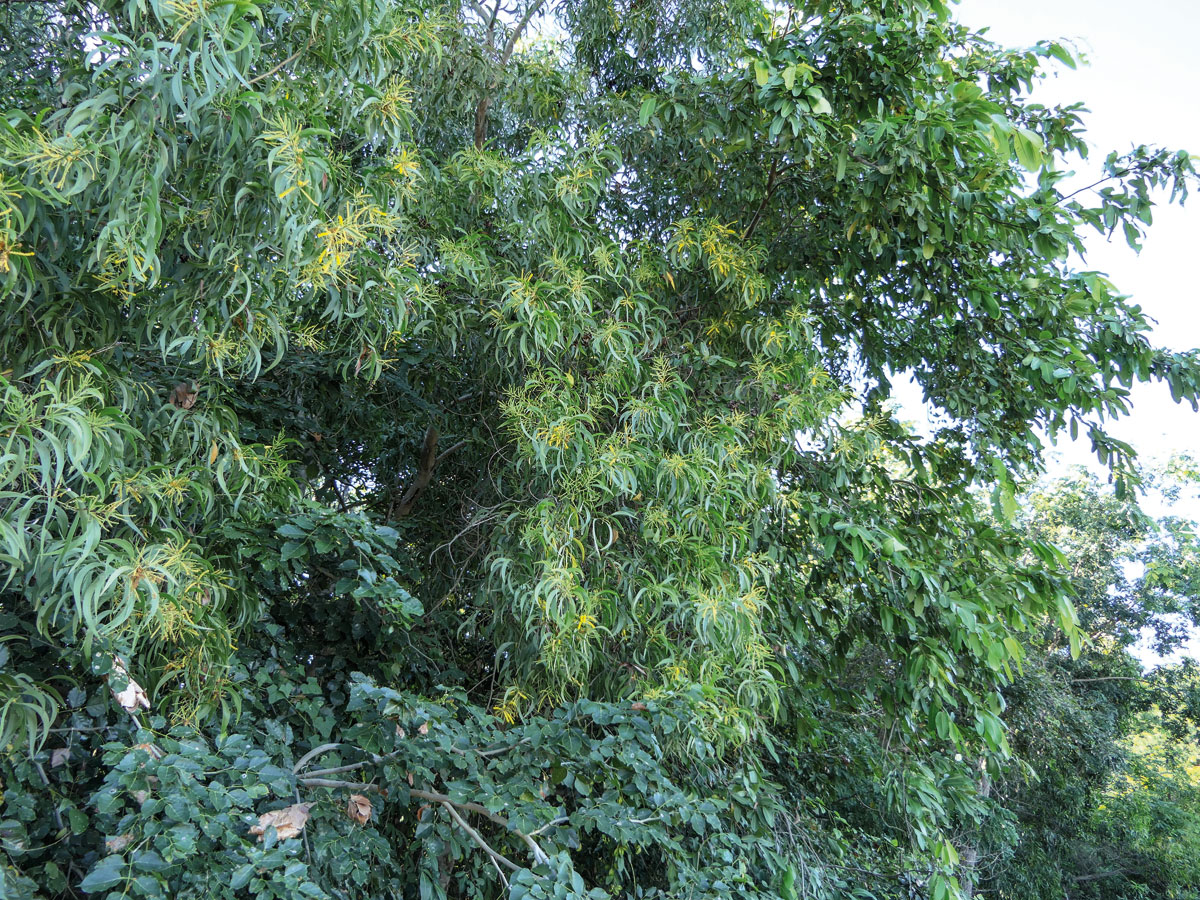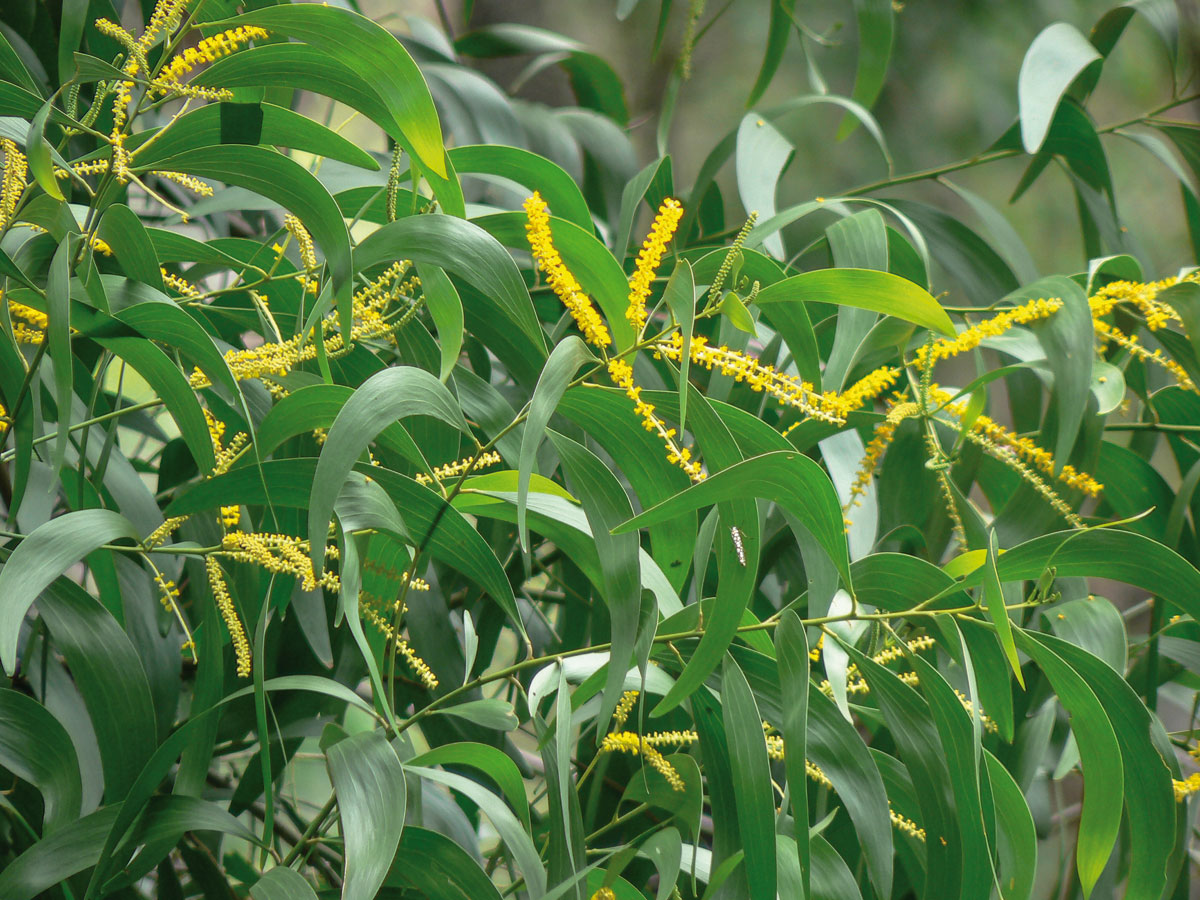Planting Pioneers
First published in Sanctuary Asia,
Vol. 43
No. 10,
October 2023
By Soham Kacker
Today, with awareness increasing about degraded landscapes, plummeting biodiversity, and the rising threat of invasive species, when it comes to ecological restoration, knowing what to plant where is the topic of discussion du jour. And by and large, the limelight seems to be on one major player in the arena – native species. The virtues of planting natives have been extolled time and again by ecological practitioners, government agencies, and eco-warrior laypeople alike, but if I’ve learnt anything from observing the natural world, it’s that the answer is never that simple. Before attempting to grow or re-grow our forests, we must ask the question – how do forests grow in the first place?

A stand of A. auriculiformis. Once a canopy of natives was formed, the acacia ceased to reproduce as abundantly. Curiously, this non-native aided the rewilding of a native habitat. Photo: Public domain/Dinesh Valke.
Most native species – especially the kinds of larger trees and shrubs enthusiastically promoted by afforestation efforts – can be remarkably fastidious. Evolved over millions of years to be adapted to just the right kind of microhabitat, if planted on a harsh degraded site, they simply wither away. Before these long-lived, slow-growing native species can take over, they need a gentler habitat to settle into, without which they can’t establish dominance. In nature, there are certain plants which specialise in colonising harsh, degraded habitats, making them more suitable for other plants to take over – meet the Pioneers. This is a term used to refer to short-lived, rapidly-growing species, which have the ability to establish in varied soil conditions – shallow or deep; sandy, rocky or clayey; and acidic or alkaline. Their quick growth stalls soil erosion, creates a closed canopy overhead, and introduces nutrients and biomass back into the soil. Under this pioneer canopy, long-lived species (called climax species) can establish and eventually, when the pioneer generation dies, form a mature forest. By the time this happens, the forest changes entirely, and typically becomes more moist and shaded – conditions which the pioneers can’t tolerate, but which ensure the continuation of the mature forest of climax species. This transition from pioneer to climax forest is called ecological succession – and it is the hidden weapon in the habitat restoration arsenal.
Therefore, the key is not to simply plant native trees, but also to plant native pioneers. But this may not always be easy. In the 1970s, the founders of the international township Auroville, in Tamil Nadu, faced the challenge of restoring the highly degraded land on which the township was founded. Efforts to plant native species largely failed, when the introduced Australian earleaf acacia tree Acacia auriculiformis suddenly took root with unprecedented success. The earleaf acacia is a typical pioneer species – it is extremely adaptable to variable soils, tolerates harsh sun and dry conditions, and lives only about 30-40 years. So the pioneer canopy in Auroville comprised a non-native species – in whose shelter the residents planted native saplings which today have begun to dominate the canopy of Auroville forests. In hindsight, the use of a foreign species as fecund as the earleaf acacia could be thought of as a formula for creating an incredibly persistent invasive species – and in fact in other habitats in India such as the western mangrove forests and the shola grasslands, the earleaf has become an invasive. In Auroville, an understanding of natural successional processes aided the restoration. Once a shaded canopy of native species was formed, the acacia ceased to reproduce as abundantly.

Flowering of Acacia auriculiformis. When the founders of Auroville tried to restore their land, A. auriculiformis, a pioneer, took root with unprecedented success to form the pioneer canopy. Photo: Public domain/Dinesh Valke.
So, can non-native species aid in the rewilding of native habitats? It would seem so! However, one must remember that there is no silver bullet in ecology – every situation and every habitat is different from the next – and what works in one may not in another. The key is to constantly change our approach to suit the specific circumstances, and always look to nature for inspiration.
Further Reading:
Nagaraja, B. C., et al. ‘Uses of Australian Acacia auriculiformis A.CUNN. (ex. Benth.) for the establishment of native species in the Sringeri area of Western Ghats, Karnataka, India.’ Forests, Trees and Livelihoods, Vol. 11, No. 4, 2001, pp. 369–372, https://doi.org/10.1080/14728028.2001.9752402.
Schmerbeck, Joachim, and Niyati Naudiyal. ‘Acacia auriculiformis.’ Enzyklopädie Der Holzgewächse: Handbuch Und Atlas Der Dendrologie, 2015, pp. 1–12, https://doi.org/10.1002/9783527678518.ehg2014002.
Soham Kacker is passionate about plants and has apprenticed at the Auroville Botanical Gardens and the Aravalli Biodiversity Park. Based in New Delhi, he is currently a research student at Ashoka University, focusing on plant ecology and conservation.



